The Aftermath Print
Click here to see The Aftermath series from Kibbutz Be’eri
Click here to see The Aftermath series from Kibbutz Be’eri
October 7. I would think that everybody in this room remembers what they were doing when they found out. I was at home, it was 4.35 pm on that day, and I was sent a message on a WhatsApp group, saying “Israel under massive missile attack” with a map from the red alert app showing all the targets. I quickly got onto social media and the news – I think I first saw a white pick up truck with Hamas gunmen on the back cruising the streets of Sderot being filmed – and realized straight away that this was no ordinary attack. Let’s just pause at that for a moment and contemplate those words – no ordinary attack – their absurdity, their unfairness, and the normalisation of something no other state on earth would be expected to tolerate or show restraint over.
My messages became increasingly frantic. To my family: “I’ve seen images of people slaughtered in the streets. I feel sick.” And 5 minutes later “They’re killing them in bomb shelters. Paraglided in. It’s absolutely gruesome”.
I try to stay off twitter over Shabbat, but at 6.52pm I tweeted the map of the rocket attacks and said “There’ve been infiltrations of terrorists from Gaza into Israel as well. I’ve seen images I wont share of slaughtered people in the streets. This is extremely distressing and means all out war”.
I sat there glued to social media and the TV until late at night, with a feeling a total helplessness that this could all be happening right now and we could be watching it unfold, and there was nothing that I could do. I went to sleep with a feeling of guilt, terror and dread, and woke up to news that some 700 people had been killed. For two weeks after that I felt constantly shaky and sick to the stomach. I know that was nothing unusual.
Why did we feel so shaken to the core? Why did we, and do we still feel this deep trauma, pain, shock, and grief, as if it is still October 7, as if time has stood still?
It wasn’t just the catastrophic intelligence failure that led to this massive attack, that shook our confidence, some might say our complacency or even arrogance, our belief in Israel’s ability to outsmart its enemies and protect itself, that saw homes being violated and desecrated, in a way that we thought would not happen anymore, and most certainly could not, would not happen in Israel.
It wasn’t just the massive scale of the attack, over 1200 people killed, over 250 taken hostage.
It wasn’t just the indescribable, medieval debauchery, degradation and depravity of the attacks, attacks that no label really does justice to. They were all of and more than a terrorist attack, a pogrom, an invasion, a jew hunt, an act of genocide. How do you describe the barbaric brutality that causes people to just disappear? Only this month, Israeli authorities identified the remains of Dolev Yehoud, a 35-year-old medic from the Nir Oz kibbutz, who it was believed had been taken hostage. Multiple forensic field tests had failed to reveal any DNA. It took 8 months to identify him. His fourth child was born on October 16. His sister, Arbel Yehoud, remains in captivity.
It wasn’t just the hostages who were taken and those who remain in captivity, to be used by Hamas as bargaining chips and sex slaves, and whom the word has allowed to be used as bargaining chips and sex slaves, and has abandoned, and tried their best to forget and actively remove any reminder of and obstruct us from rescuing and vilified us when we do. The Red Cross has not visited them once.
It wasn’t just who participated on that day – so-called civilians, journalists, members of UNRWA.
It wasn’t just the bloodlust, pride and jubilation of those who participated somehow paradoxically coupled with a deadeyed coldblooded mechanical execution – I use that in both senses of the word. The ecstasy of the mob in Gaza as the hunters return with their bounty, the mutilated body of Shani Louk splayed on the back of a truck, spat on and hit with planks, greeted with ecstatic cries of Allah Akbar. The recording of the son who rang his parents with great excitement to announce that he had killed ten Yahoud. The terrorist who shot a father dead in his Kibbutz Be’eri home, and is caught in the house’s security cameras as he walks into the kitchen and grabs a soft drink out of the refrigerator and drinks it, as the two young sons sit there, one saying “Papa is dead. Papa is dead. Why am I still alive?” while the other sits there with one eye gouged out.
It wasn’t just the livestreaming and gopro-ing for the world to see, the granddaughter who discovered her grandmother’s murder when her assailant filmed it on her phone and posted it on her Facebook wall. At least the Nazis – and let’s stop and think about those words too and what it says that we might ever use them – at least the Nazis tried to hide, went to great lengths to hide, the evidence of their crimes. The calculation that Hamas made was that the humiliation, pain, terror and psychological torture their recordings inflicted would be worth it, and outweigh any outrage, any damage to their cause, and you know what? They were right.
They were right, because there are those around the world, including in New Zealand, including academics and politicians, who despite all the evidence, are willing to infantilise, trivialise, justify, defend, and celebrate Hamas and its evildoing. But they were also right because there are those who reject the evidence of their eyes and ears.
By 16 October, I understood that we were already dealing with October 7 denialism. My younger son was at his last Uni lecture for the year on Islam, as it turns out, and was told by a young woman in a hijab that the Nova festival attack was “Zionist propaganda”. Some time later my mother engaged with an anti-Israel protester and was told the footage of that day was all AI. In this war, even when a photo or footage isn’t AI-generated, and a lot have been – we have all seen the 6-fingered Gazan boy – the possibility that it could have been, sows confusion and doubt.
Perhaps worst of all is the denial that rape was used as a tool of war on that day, despite countless eye witness testimonies, and forensic and other evidence that I won’t discuss. Apparently progressive people, who a few years before were happy to destroy a man’s career based on a rumour that he touched a woman’s knee without her consent because #believe all women, suddenly found themselves disbelieving substantial, undeniable, evidence of unspeakably savage rape and sex-based violence, as some of us saw on Wednesday night when we watched Sheryl Sandberg’s powerful documentary Screams before Silence.
Of course, there has been a campaign to erase and appropriate our history for a long time – the Temple is built on top of and its existence denied, we are told Jesus was Palestinian, our sacred historical sites are recognised and protected at the UN as Muslim sites. But denial of our trauma is much more than just delegitimization – though that is bad enough. We must be clear that it is integral to the genocidal strategy that Hamas and the Iranian regime is committed to, and that people around the world, unwittingly or not, are enabling. Denial is an inversion of reality and morality that strives to reshape history in order to demonise victims and rehabilitate the perpetrators.
As the late Armenian historian Professor Richard G. Hovannisian said “Complete annihilation of a people requires the banishment of recollection and suffocation of remembrance. Falsification, deception and half-truths reduce what was to what might have been or perhaps what was not at all.”
In his book “Crusade in Europe” Eisenhower wrote about the liberation of the camps at the end of WW2 “I have never felt able to describe my emotional reactions when I first came face to face with indisputable evidence of Nazi brutality and ruthless disregard of every shred of decency. Up to that time I had known about it only generally or through secondary sources. I am certain, however that I have never at any other time experienced an equal sense of shock. I visited every nook and cranny of the camp because I felt it my duty to be in a position from then on to testify at first hand about these things in case there ever grew up at home the belief or assumption that `the stories of Nazi brutality were just propaganda.” How prescient that was.
This is what Ilan has done, and why it is so crucial. He has chosen to testify. He travelled to Israel, and on February 7, 4 months to the day, became one of few people to get access to Kibbutz Be’eri, to bear witness to the devastation of that darkest of days. He has shown great commitment in doing so, and in putting this exhibition together, at personal cost and sacrifice. It seems there are many people who just don’t want to know or see.
But we have to keep trying, all of us, to share the truth, because it can make a difference. According to a Palestinian poll released on June 12, published by the Palestinian Center for Policy and Survey Research, 90 percent of Palestinians have not seen videos from that day, which is interesting given they seem very connected to social media and the amount of videos that they seem to record and circulate themselves. Importantly, however, the results also show that those who watched the videos are about fifteen times more likely than those who did not, to believe that Hamas committed atrocities on October 7.
I can think of three main reasons why preserving, recording and communicating the truth is vital.
First, to honour the victims and survivors. As Elie Wisel said: For the survivor who chooses to testify, it is clear: his duty is to bear witness for the dead and for the living. He has no right to deprive future generations of a past that belongs to our collective memory. To forget would be not only dangerous but offensive; to forget the dead would be akin to killing them a second time.”
Second, as Wiesel alludes to, our collective memory is who we are as a people. The verb Zachor (“remember”) is repeated everywhere in Jewish ceremony and liturgy: under the wedding canopy, during Seder, in the Ten Commandments, during Shabbat, in siddurim. Now, October 7 is forever embedded into our collective memory and will be handed down the generations as part of our story. And we must be better at telling our story to the world.
Third, we must stand for the truth for the sake of truth itself, because open, free and liberal societies, which are the societies that Jews thrive in but are also the best for civilisation itself, depend on the truth. If all we have is feelings, moral relativism, and narratives, we as a society will be destroyed.
So I thank you all for being here today in person or online to bear witness. Remember that, while we are not physically fighting for Israel, we can play a critical part in the battleground for the truth, to combat the falsification, distortion, revision and erasure of history and to be the guardians of our collective memory. And at this moment in time for the Jewish people, I would suggest that it is a moral necessity for us to do so, and to play our part in continuing the most inspiring, unbreakable story of an ancient people who have survived and stayed true to ourselves for over 3000 years against all odds.
Am Yisrael Chai.
Faces of Humanity is a documentary collection with little or no changes to the actual scene. I asked people to look straight into my camera, so these are not candid photos. The strength of this series is in giving viewers a rare opportunity to connect with people in their natural environment. This diverse group of people serves as a timely reminder that, despite our many cultural differences, we can unite as a community through the power of photography.
This is a celebration of our shared values: hard work, the importance of family, and caring for each other as humans. I hope that through these photos viewers learn more about people with different backgrounds from around the world: Ruanda, Morocco, Tanzania, Cairo, Jerusalem and New Zealand. The show offers opportunities for people to contemplate, absorb, and increase their awareness of the complexities of human experience. Each photograph reveals an individual with a story that has shaped their life.
We connect with others by making eye contact – reading their expressions, feeling their emotions and getting a glimpse of their souls. I want viewers to form meaningful connections with these people: to see them as human beings, not simply subjects in front of a camera. I purposely created portraits that allow viewers to make direct eye contact with each person, so visitors can form emotional connections with these individuals.
In sharing this portfolio, I encourage viewers to show empathy: to accept others and to recognise the value of cultural diversity. We would all experience an enhanced sense of community if we took the time to appreciate interactions which allow us to discover the world beyond our familiar boundaries. We are all wonderfully unique, yet, at the same time, we are deeply similar.
I am presenting these photographs in timeless monochrome, to ensure consistency and flow of the series amidst the chaos and clutter of the busy environment. The portraits are crisp and sharp, to allow the details to inspire the imagination and to evoke emotions. My aim is to create an authentic portfolio of diverse individuals in a foreign land. My goal is to tell their stories using a clear narrative style and enduring quality.
Tires – Morocco

Arthur was sitting and waiting for customers in the same barber shop that his father established 60 years ago in Melbourne. It took three visits to the store and $100 to convince Arthur to have his portrait taken. I then had my haircut… AIPP Silver with Distinction Award.
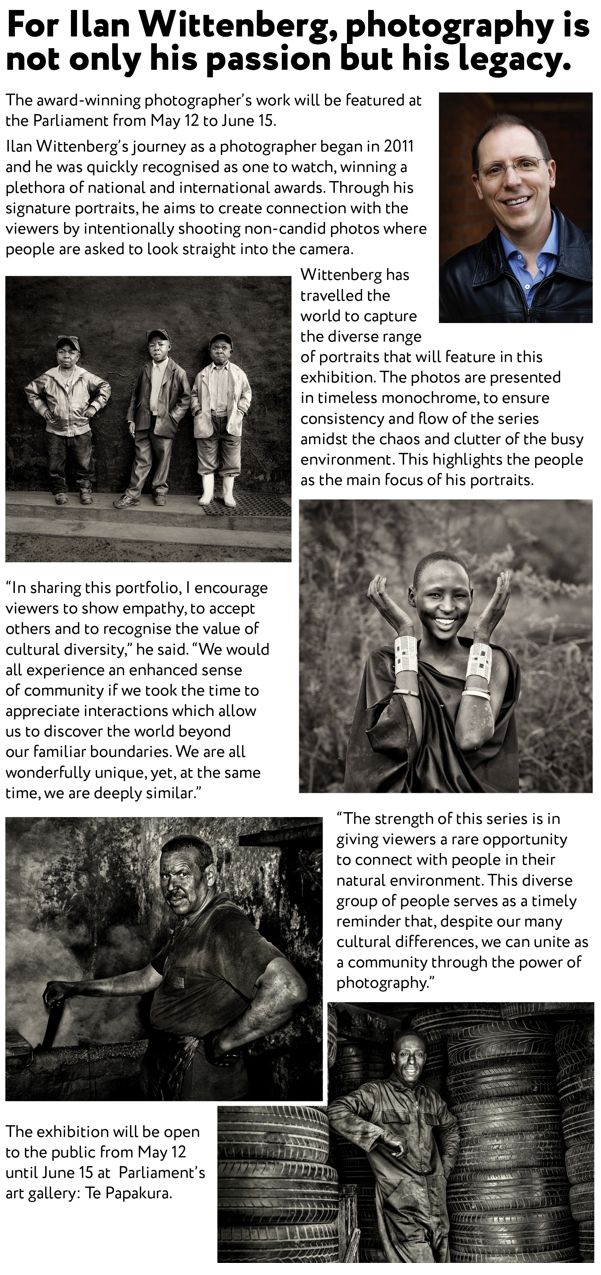
Faces of Humanity
Artist Statement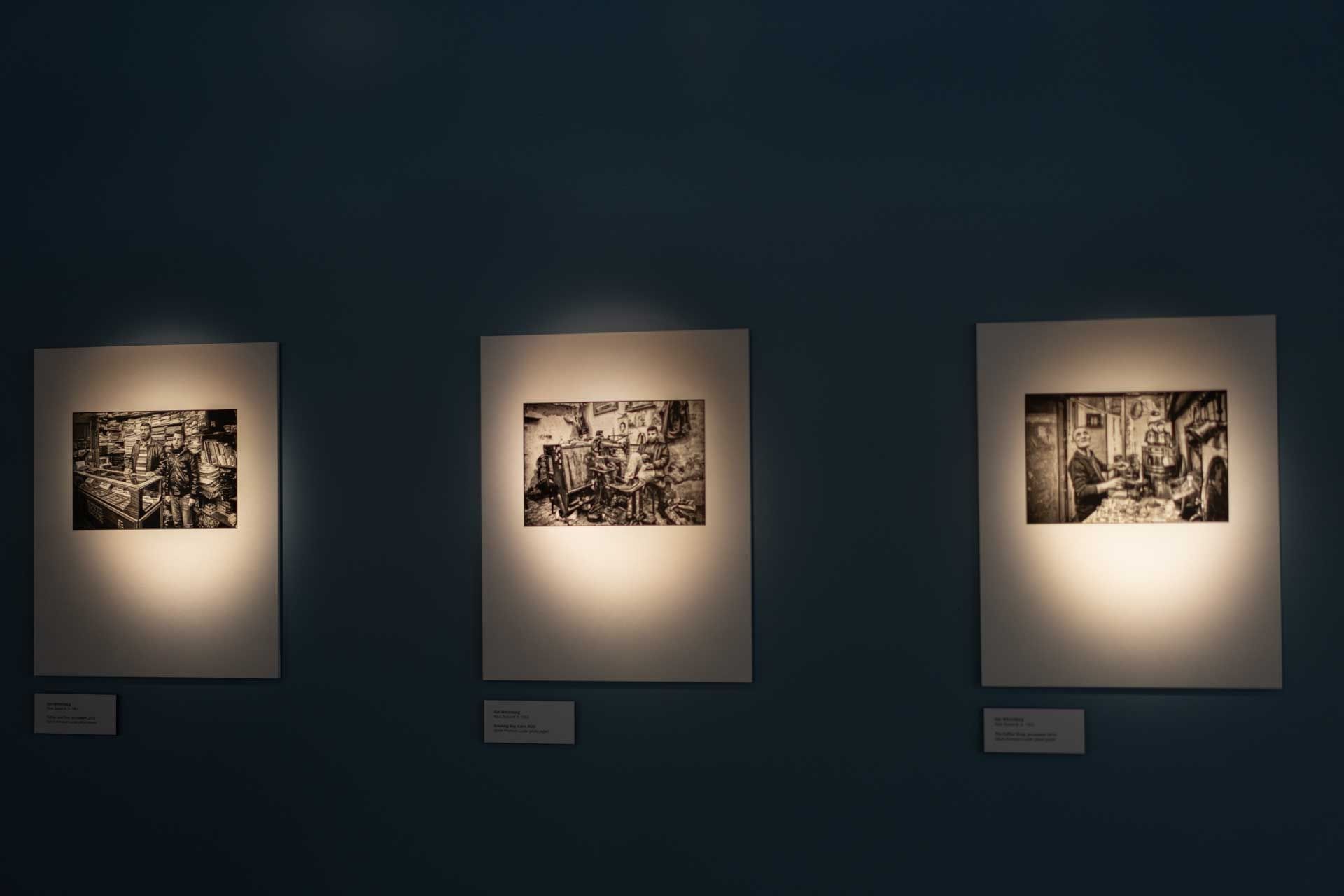
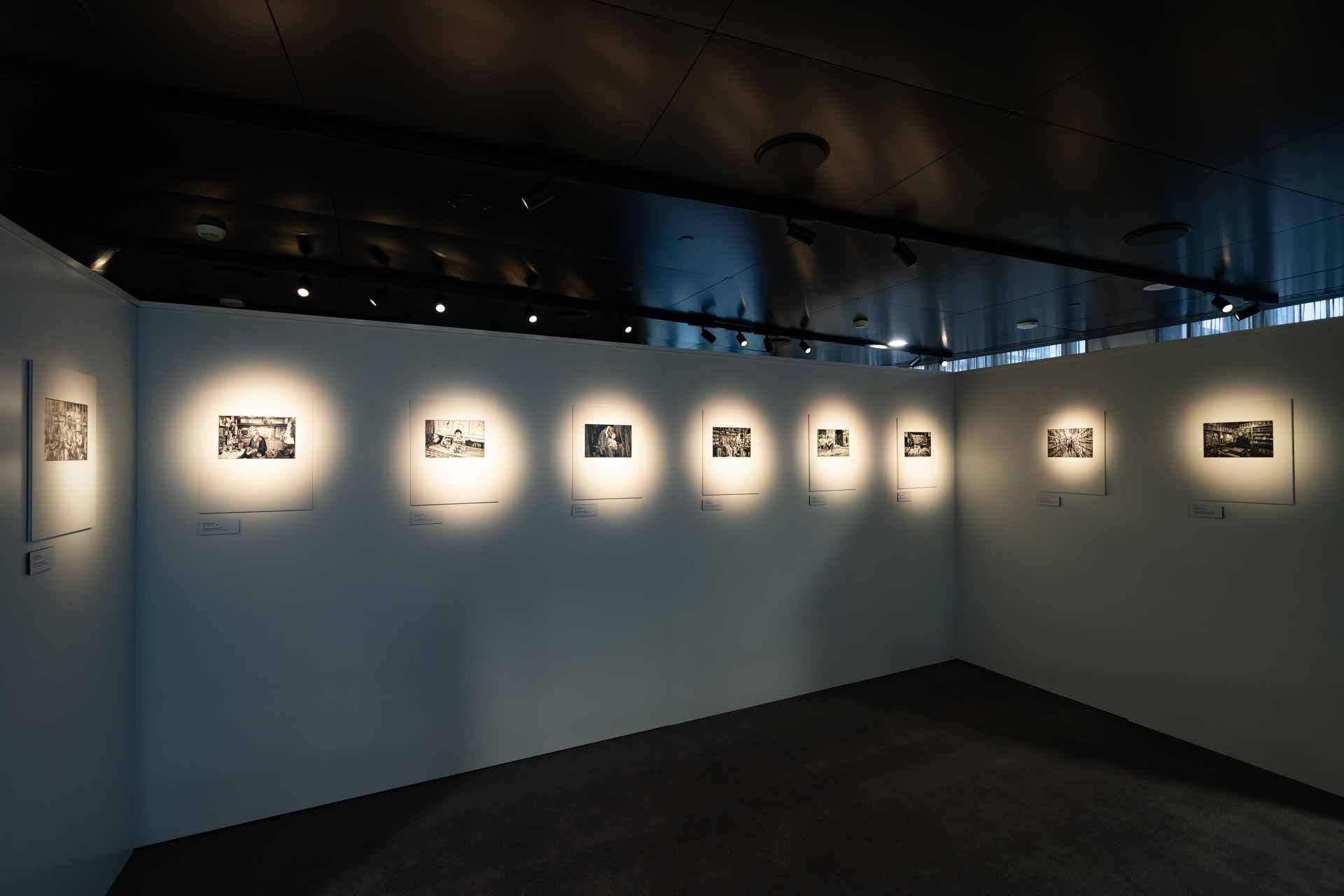
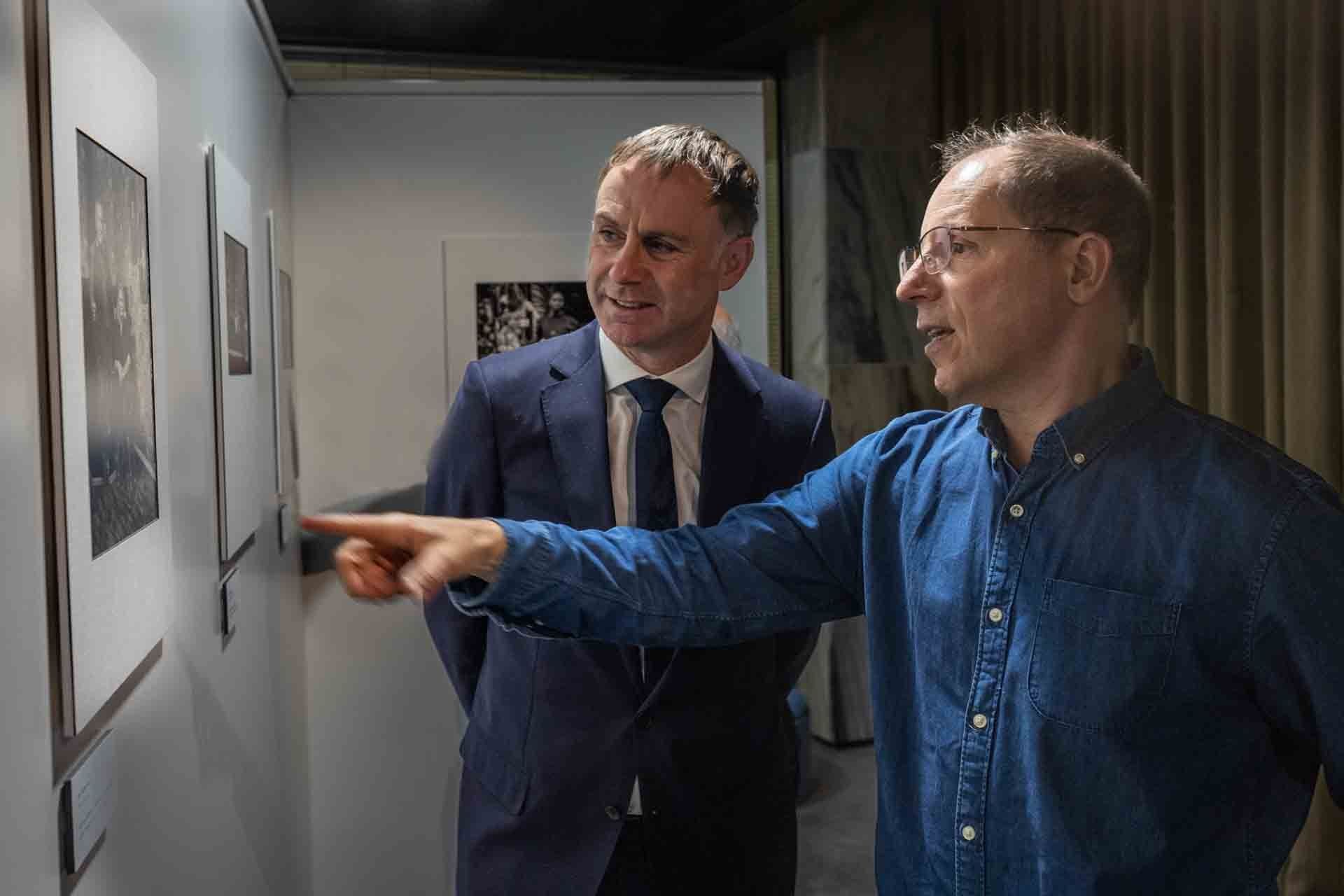
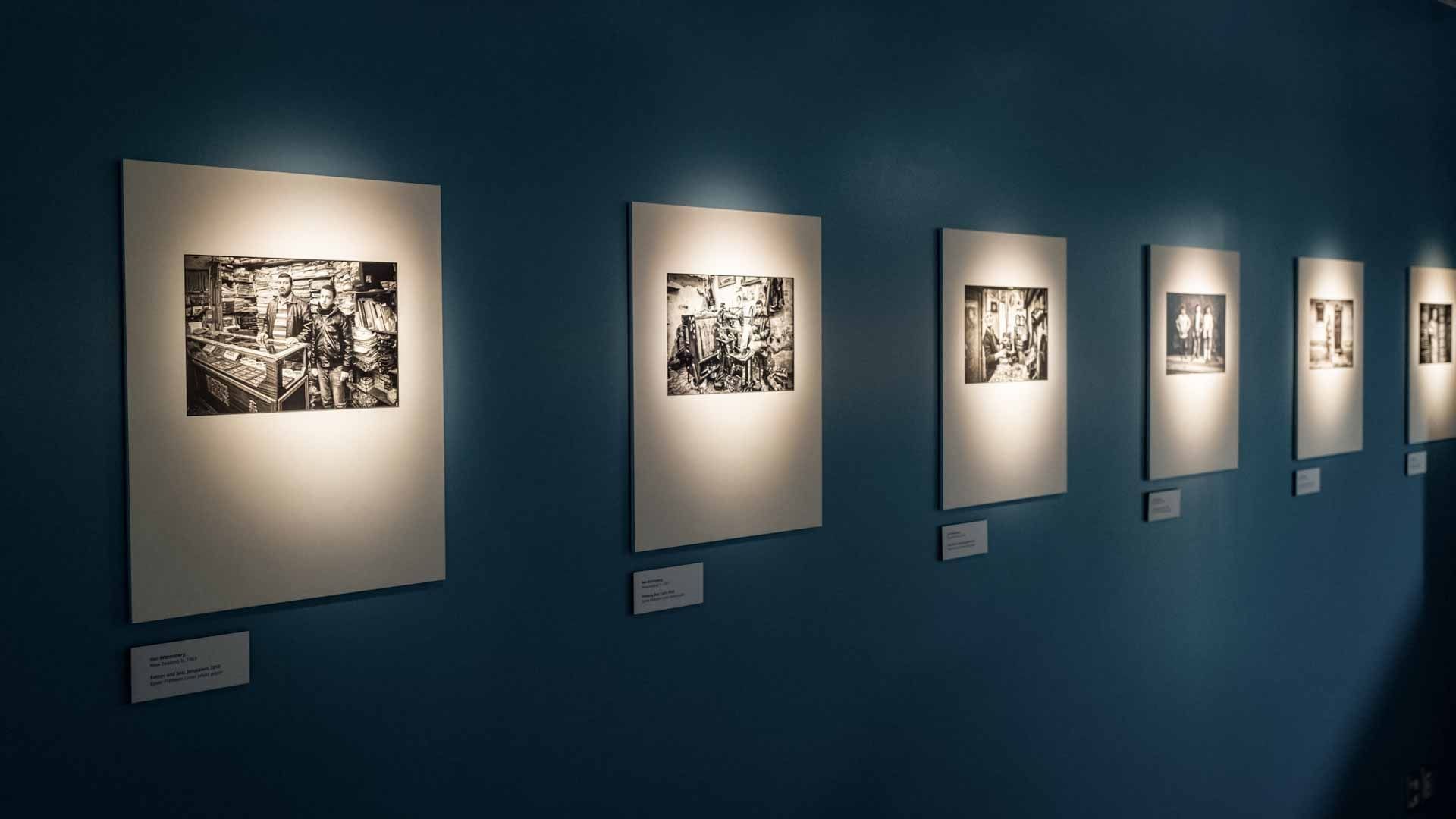
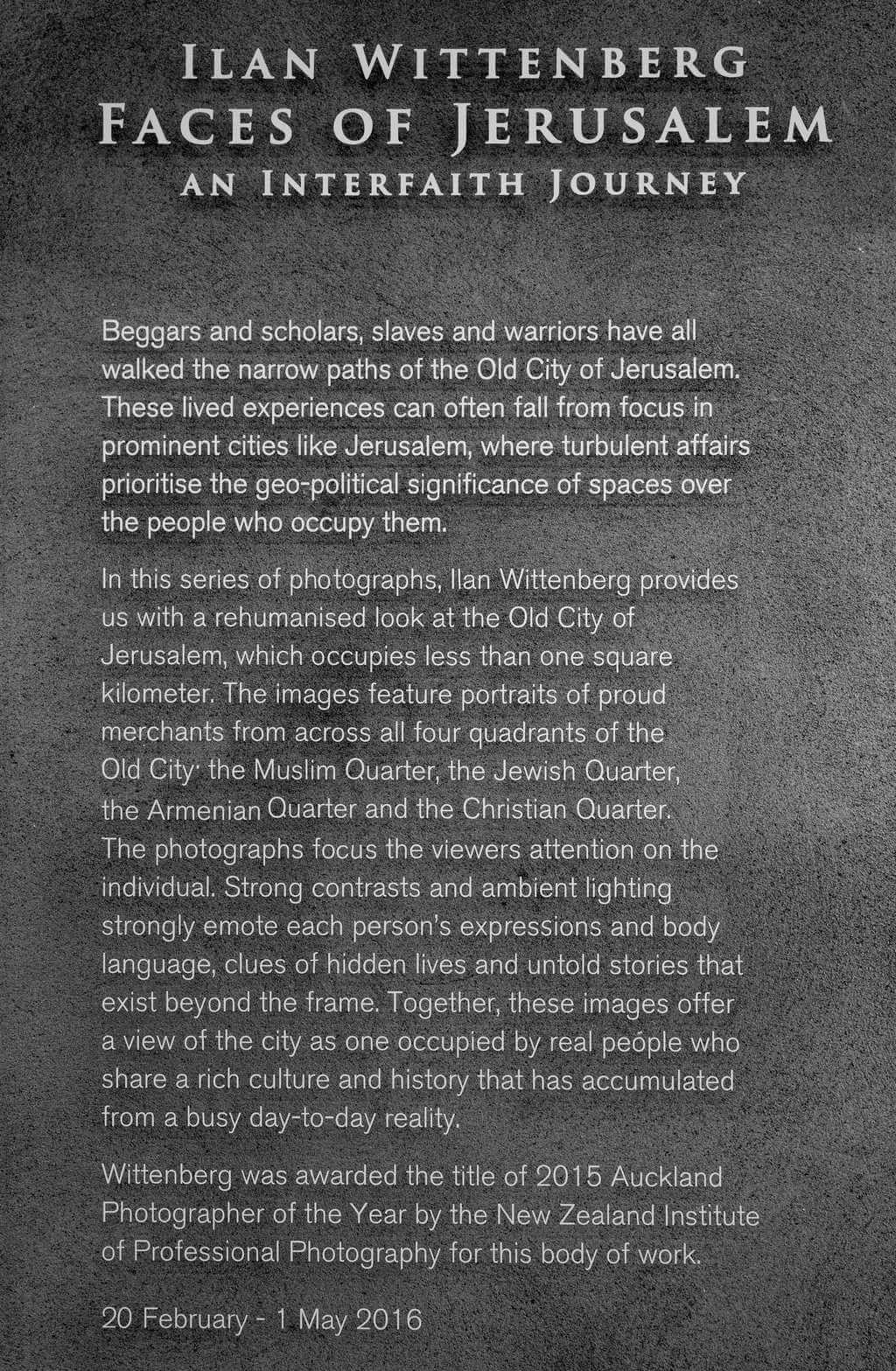
located on the Temple Mount in the Old City of Jerusalem, the Dome of the Rock is an Islamic shrine at the center of the Al-Aqsa mosque compound, and one of the three holiest Islamic shrines in the world. It was initially built in 691 on the site of the Second Jewish Temple and destroyed during the Roman Siege of Jerusalem. The original dome collapsed in 1015 and was rebuilt in 1023. Being one of Jerusalem’s most recognizable landmark it is a UNESCO World Heritage Site. According to belief, the rock inside the mosque is the spot from which the Islamic prophet Muhammad ascended to Heaven accompanied by the angel Gabriel. Usually packed with tourists and locals, I was the only one to visit the site early morning when the forecast was for snow. It was so cold that there was no one on site and I could get a beautiful reflection off the wet marble stones just before the storm.
When
Saturday, May 15, 1-4 pm, $49 admission fee, Register Here
Where
Studio One Toi Tū
1 Ponsonby Road, Ponsonby, Auckland.
What’s included
We will review travel photography from Cairo, Jerusalem and Morocco. During this seminar participants will have plenty of opportunities to ask questions regarding Ilan’s camera technique, equipment, software, post processing, creating a portfolio, exhibiting and entering the Awards. Wittenberg will also talk about how to engage people in a foreign land when asking to create their portrait and how to use photos for storytelling.
You will also be able to try different printing papers courtesy of EPSON who will have an A3-A2 size photo printer available for us. You are welcome to bring your favourite 2-3 images on a USB or an SD card (JPEG format) so these can be printed during the seminar. Bring an empty cardboard tube so your print will travel home safely.
Techniques covered
What to bring